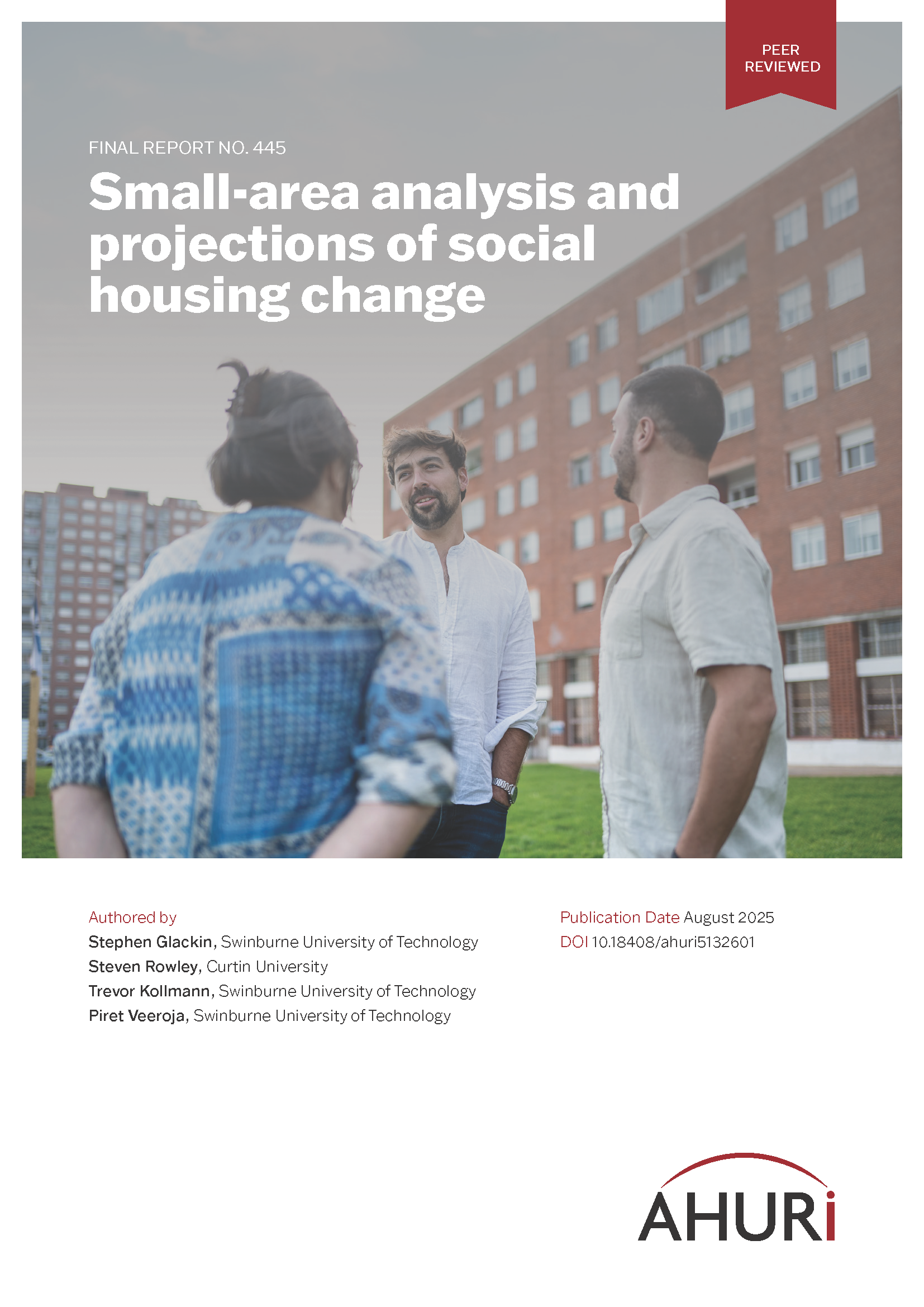
New research shows where to build well located social housing
28 Aug 2025
New AHURI research has identified priority locations for building ‘well located’ social housing. Well located homes are in places where tenants can easily access amenities including health care, schools, public transport and jobs.
The research mapped where social housing is located compared to local services across Australia.
It found social housing is not spread evenly. ‘Many high-amenity locations have very little social housing, while many low-amenity locations have a lot of social housing,’ says lead author, Dr Stephen Glackin from Swinburne University of Technology.
‘For social housing tenants, many of whom may not have a car, easy access to services can be very important. This is particularly true for tenants with complex needs who may require access to medical and other support services,’ says Dr Glackin.
The research found that 70% of well located suburbs had less than 5% social housing. For example, suburbs like Haymarket (NSW), Melbourne CBD (VIC) and Brisbane City (QLD) each had only 0.3% social housing. In comparison, many suburbs with poor access to amenities had much higher rates of social housing. For example, Bridgewater (TAS) had 30% social housing, Ashcroft – Busby – Miller (NSW) had 28% and Wacol (QLD) had 23%.
The research proposes that having at least 5% social housing enables governments to better respond to economic shocks and housing stress while providing sufficient scale for efficient asset management.
Amenity Index maps social housing to show areas with best access to services
The research developed an 'Amenity Index' which shows how social housing stock is distributed and what access and value it provides.
The research argues that governments building more social housing should target locations with good access to amenities.
New investment strategies could increase social housing in well located areas by 20%
The research also looked at investment strategies for increasing social housing in well located urban areas.
‘While selling social housing in well located areas may provide governments more money for redevelopment, it does not make sense for the wellbeing of tenants or planning for future housing need,’ says Dr Glackin.
Importantly, the research modelling shows that changing investment approaches in high-value, well located urban areas could increase social housing by 20 per cent.
‘We found this increase would be paid for by selling 30 per cent of the existing low-density social housing in well located areas to private buyers,’ says Dr Glackin. ‘The money could then be used to build medium-density social housing in the same well located area. Keeping social housing in well located areas is better than building new social housing in poorly located areas.’
‘Selling low-density social housing and building higher density housing in well located areas will increase supply in locations that help tenants most,’ says Dr Glackin. ‘It will also make access to the services in our cities more equitable for many more Australians.’
The research, ‘Small-area analysis and projections of social housing change’, was undertaken for AHURI by researchers from Swinburne University of Technology and Curtin University.

